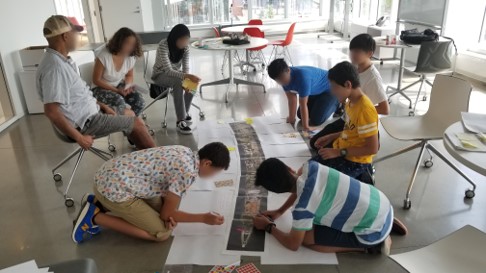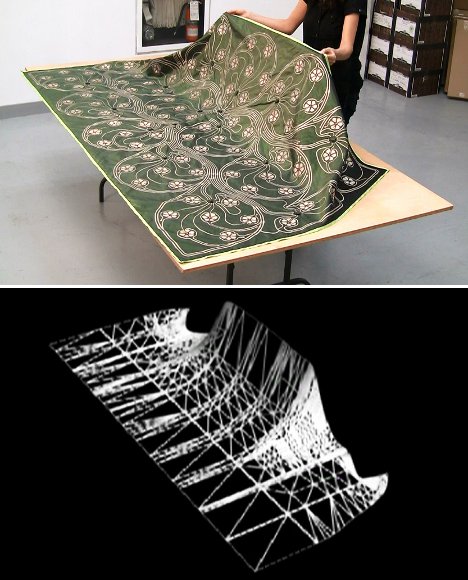Research
Design Mediated Difference
Date: 2017-present
Status: Fieldwork complete | Data analysis and writing ongoing
This project investigates how design as a socio-material practice can support communities in negotiating, reconfiguring or reimagining the environments they inhabit in more equitable ways despite cultural, generational, or organizational differences. Using participatory design, pedagogical design interventions, and critical theory, my project collaborators and I have probed this question across intergenerational, interinstitutional, and intercultural contexts in New York City. We do so through various approaches to difference informed by theories from political philosophy, urban sociology, and science and technology studies (STS). Project outcomes so far:
> Approaching Difference through Care (CHI’19)
> Approaching Difference through Unmaking (CHI’22)
> Approaching Difference through Proxy Objects (CHI’20 Workshop Paper)

User sketch > auto-generated digital model > row-by-row instructions > final model
Supporting Shelter Customization in Protracted Displacement Contexts
Date: 2014-2020
Status: Complete
This project is motivated by the fact that the average forced displacement period is 17 years, which many refugees spend in camps not built to last that long. My collaborators and I investigated 12 Palestinian refugee camps in Lebanon to understand how they evolved over six decades, and worked from there to design structural “seeds” that are more sound for long-term development. We generated data by tracing camp satellite images, conducted interviews with individuals who grew up in camps, and consulted experts from design, journalism, human rights, and public health. This work led to a best thesis award for my Master of Architecture degree. Subsequent field work in 2016 across six camps in north Iraq generated insights such as the disparity between refugee and IDP (Internally Displaced Person) conditions, and the use of shelter customization as a form of past reclamation. I built on these findings by designing low-tech interfaces (supported by computer vision and modelling algorithms) for sketching and visualizing customized shelters. Outcomes:
> M.Arch Dissertation
> Data on shelter permanence and customization in camps (Limits ’17)
> Some insights on ICT use in camps (Limits ’19)
> Memory through Design (CHI ’20 Honorable Mention)
> More: [Shelter Framework] [Tool demo] [TEDxUofT Talk ]
IM BLANKY
Date: 2011-2014
Status: Complete
IM Blanky is a computational fabric panel comprised of tilt sensors inter-weaved as a grid on fabric in geometrically interesting patterns. Accelerometers and embedded sensors detect the tiniest motions, allowing vital signals such as heartbeat, temperature, and breathing patterns to be remotely monitored and stored for clinical analysis. It could also self-model its shape and function as a 3d scanner using tilt information. Read more here, or check out IM Blanky on:
[dezeen][reuters][architizer][domus][Stitches – Suzhou Fast Forward][Vimeo][In Print]



